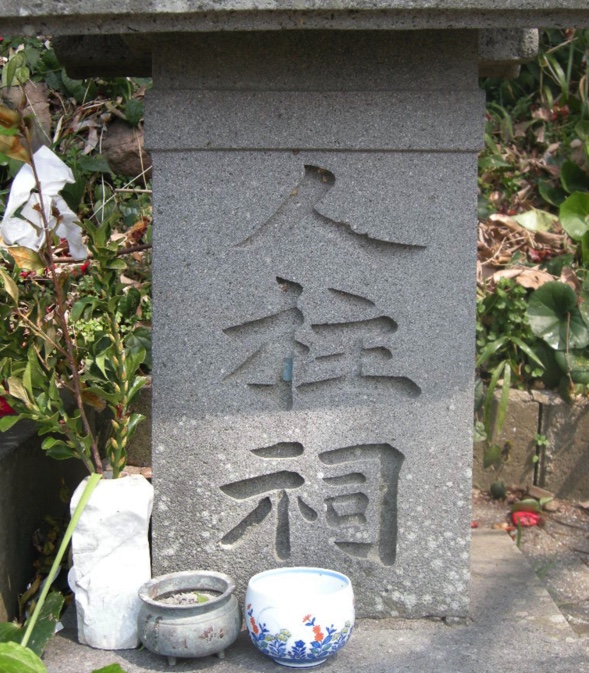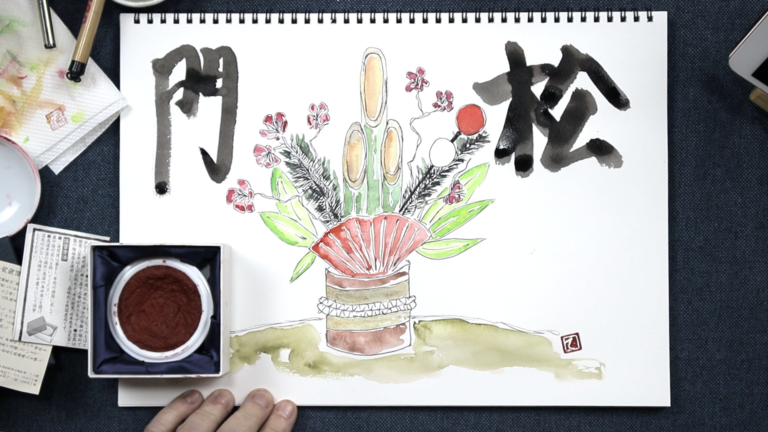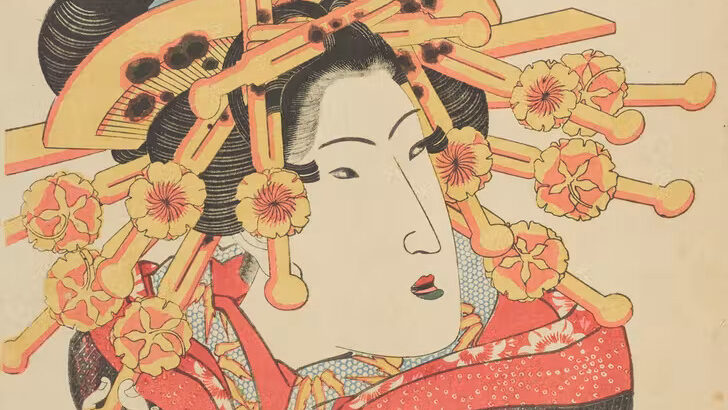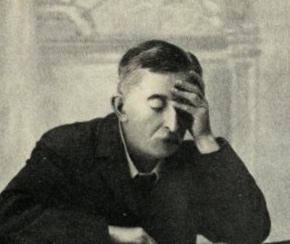Hey hey,
This is Thersa Matsuura and you’re listening to Uncanny Japan.
Today let me read you a story Concerning Tea. It’s called…Concerning Tea.
Intro
Chapter from Myths & Legends of Japan by F. Hadland Davis
So much to say! I made the edits-deadline for the The Book of Japanese Folklore at the expense of doing anything else for a couple weeks. I just looked up and it’s probably around 24-hours before we need to get this episode up, so I found a delightful — in the public domain — piece about Japanese tea. It was a little long, so I took just the parts about Japanese tea, not English or Chinese. Although I encourage you to read it on Gutenberg. It’s quite interesting. This is just one chapter of an old book called MYTHS & LEGENDS OF JAPAN BY F. HADLAND DAVIS.
Next episode I have more big news and I’m going to take you on a trip around a Japanese summer Obon Festival. I’m not sure how I’m going to do that. I have ideas and I’m imagining some choice words and audio magic from sound guy Rich Pav. It’ll be fun.
Oh before I start, let me explain a word in the opening quote. Horaisan, or Mount Hōrai, is a mythical mountainous island, originally from China called Mount Penglai in Chinese. It’s also mentioned in the ancient Japanese text, the Nihon Shoki. So the story did make it’s way to Japan. There are many magical and outright surreal things that happen on this mountain. It’s where the Chinese 8 Immortals live. Also there, all birds and beasts are completely white, palaces are made of silver, gold and jade, and jewels grow on trees. It’s a kind of paradise.
A side note: Japanese fancy gardens usually have parts that symbolize water, bridges, etc. The hōraisan refers to an inaccessible island in the garden. Which is totally on brand.
Also, F. Hadland Davis says that he had derived most of the material for this chapter from The Book of Tea, by Okakura-Kakuzo, and we warmly commend this very charming volume to those who are interested in the subject.
Okay, let’s have some tea.
Concerning Tea
CHAPTER 24: CONCERNING TEA
A quote by Lotung.
“The first cup moistens my lips and throat, the second cup breaks my loneliness, the third cup searches my inmost being…. The fourth cup raises a slight perspiration—all the wrong of life passes away through my pores. At the fifth cup I am purified; the sixth cup calls me to the realms of immortals. The seventh cup—ah, but I could take no more! I only feel the breath of cool wind that rises in my sleeves. Where is Horaisan?Let me ride on this sweet breeze and waft away thither.”
The Japanese Tea Ceremony
It is believed that the great Buddhist saint, Dengyō Daishi, introduced tea into Japan from China in A.D. 805. In any case tea-drinking in Nippon was associated with Buddhism, and most particularly with the Zen sect, which had incorporated so many of the Taoist doctrines. The priests of this order drank tea from a single bowl before the image of Bodhi Dharma (Daruma). They did so in the spirit of reverence, and regarded the tea-drinking as a holy sacrament. It was this Zen observance, strictly of a religious nature, which finally developed into the Japanese tea ceremony.
“The tea ceremonies,” writes Professor B. H. Chamberlain, “have undergone three transformations during the six or seven hundred years of their existence. They have passed through a medico-religious stage, a luxurious stage, and, lastly, an æsthetic stage.”
In the religious stage the Buddhist priest Eisai wrote a pamphlet entitled The Salutary Influence of Tea-drinking, in which he asserted that this beverage had the power to drive away evil spirits. He introduced a religious ceremonial in regard to the worship of ancestors, accompanied by the beating of drums and the burning of incense. Eisai wrote his tract with the intention of converting Minamoto-no-Sanetomo from his vicious love of the wine-cup, and endeavoured to show the superiority of the tea-plant over the juice of the grape.
We find that the tea ceremonies for the time being lost their religious significance: “The Daimyōs,” writes Professor Chamberlain, “who daily took part in them reclined on couches spread with tiger-skins and leopard-skins. The walls of the spacious apartments in which the guests assembled were hung, not only with Buddhist pictures, but with damask and brocade, with gold and silver vessels, and swords in splendid sheaths.
Precious perfumes were burnt, rare fishes and strange birds were served up with sweetmeats and wine, and the point of the entertainment consisted in guessing where the material for each cup of tea had been produced; for as many brands as possible were brought in, to serve as a puzzle or jeu de soseté (jeu de société)…. Every right guess procured — for him who made it — the gift of one of the treasures that were hung round the room. But he was not allowed to carry it away himself. The rules of the tea ceremonies, as then practised, ordained that all the things rich and rare that were exhibited must be given by their winners to the singing and dancing-girls, troupes of whom were present to help the company in their carousal.”
This variety of tea ceremony, which appears to have been more of an orgy than anything else, reflected the luxurious and dissolute age in which it was practised.
The tea ceremony, in its more enduring and characteristic form, was destined to abandon all vulgar display, to embrace a certain amount of religion and philosophy, and above all to afford a means of studying art and the beauty of Nature. The tea-room became, not a place of carousal, but a place where the wayfarer might find peace in solemn meditation. Even the garden path leading to the tea-room had its symbolic meaning, for it signified the first stage of self-illumination.
The following was Kobori-Enshiu’s idea of the path leading to the tea-room:
“A cluster of summer trees,
A bit of the sea,
A pale evening moon.”
Such a scene was intended to convey to the wayfarer a sense of spiritual light. The trees, sea, and moon awakened old dreams, and their presence made the guest eager to pass into the greater joys of the tea-room. No samurai was allowed to take his sword into the fragrant sanctuary of peace, and in many tea-rooms there was a low door through which the guests entered with bowed head, as a sign of humility.
In silence the guests made (obey-sense) obeisance before a kakemono, or some simple and beautiful flower on the tokonoma (alcove), and then seated themselves upon the mats. When they had done so the host entered and the water was heard to boil in the kettle with a musical sound, because of some pieces of iron which it contained. Even the boiling of the kettle was associated with poetical ideas, for the song of water and metal was intended to suggest “the echoes of a cataract muffled by clouds, of a distant sea breaking among the rocks, a rainstorm sweeping through a bamboo forest, or of the (sa-ow-ing) soughing of pines on some far-away hill.”
There was a sense of harmony in the tea-room. The light was like the mellow light of evening, and the garments of the company were as quiet and unobtrusive as the grey wings of a moth. In this peaceful apartment the guests drank their tea and meditated, and went forth into the world again better and stronger for having contemplated in silence the beautiful and the noble in religion, art, and nature. “Seeking always to be in harmony with the great rhythm of the universe, they were ever prepared to enter the unknown.”
The Passing of Rikiu
Rikiu was one of the greatest of tea-masters, and for long he remained the friend of Taiko-Hideyoshi; but the age in which he lived was full of treachery. There were many who were jealous of Rikiu, many who sought his death. When a coldness sprang up between Hideyoshi and Rikiu, the enemies of the great tea-master made use of this breach of friendship by spreading the report that Rikiu intended to add poison to a cup of tea and present it to his distinguished patron.
Hideyoshi soon heard of the rumour, and without troubling to examine the matter he condemned Rikiu to die by his own hand.
On the last day of the famous tea-master’s life he invited many of his disciples to join with him in his final tea ceremony. As they walked up the garden path it seemed that ghosts whispered in the rustling leaves. When the disciples entered the tea-room they saw a kakemono hanging in the tokonoma, and when they raised their sorrowful eyes they saw that the writing described the passing of all earthly things. There was poetry in the singing of the tea-kettle, but it was a sad song like the plaintive cry of an insect. Rikiu came into the tea-room calm and dignified, and, according to custom, he allowed the chief guest to admire the various articles associated with the tea ceremony. When all the guests had gazed upon them, noting their beauty with a heavy heart, Rikiu presented
each disciple with a souvenir.
He took his own cup in his hand, and said: “Never again shall this cup, polluted by the lips of misfortune, be used by man.” Having spoken these words, he broke the cup as a sign that the tea ceremony was over, and the guests bade a sad farewell and departed. Only one remained to witness, not the drinking of another cup of tea, but the passing of Rikiu. The great master took off his outer garment, and revealed the pure white robe of Death. Still calm and dignified, he looked upon his dagger, and then recited the following verse with unfaltering voice:
“Welcome to thee,
O sword of eternity!
Through Buddha
And through Daruma alike
Thou hast cleft thy way.”
He who loved to quote the old poem,
“To those who long only for flowers fain would I show the full-blown spring which abides in the toiling buds of snow-covered hills,”
has crowned the Japanese tea ceremony with an immortal flower.
The Legend of the Tea Plant
Daruma was an Indian sage, whose image, as we have already seen, was associated with the ritualistic drinking of tea by the Zen sect in Japan. He is said to have been the son of a Hindu king, and received instruction from Panyatara. When he had completed his studies he retired to Lo Yang, where he remained seated in meditation for nine years. During this period the sage was tempted after the manner of St. Anthony. He wrestled with these temptations by continually reciting sacred scriptures; but the frequent repetition of the word “jewel” lost its spiritual significance, and became associated with the precious stone worn in the ear of a certain lovely woman.
Even the word “lotus,” so sacred to all true Buddhists, ceased to be the symbol of the Lord Buddha and suggested to Daruma the opening of a girl’s fair mouth. His temptations increased, and he was transported to an Indian city, where he found himself among a vast crowd of worshippers. He saw strange deities with horrible symbols upon their foreheads, and Rajahs and Princes riding upon elephants, surrounded by a great company of dancing-girls.
The great crowd of people surged forward, and Daruma with them, till they came to a temple with innumerable pinnacles, a temple covered with a multitude of foul forms, and it seemed to Daruma that he met and kissed the woman who had changed the meaning of jewel and lotus. Then suddenly the vision departed, and Daruma awoke to find himself sitting under the Chinese sky. The sage, who had fallen asleep during his meditation, was truly penitent for the neglect of his devotions, and, taking a knife from his girdle, he cut off his eyelids and cast them upon the ground, saying: “O Thou Perfectly Awakened!” The eyelids were transformed into the tea-plant, from which was made a beverage that would repel slumber and allow good Buddhist priests to their vigils.
Daruma
Daruma is generally represented without legs, for according to one version of the legend we have just given he lost his limbs as the result of the nine-year meditation. Netsuke-carvers depict him in a full, bag-like garment, with a scowling face and lidless eyes. He is sometimes presented in Japanese art as being surrounded with cobwebs, and there is a very subtle variation of the saint portrayed as a female Daruma, which is nothing less than a playful jest against Japanese women, who could not be expected to remain silent for nine years!
An owl is frequently associated with Daruma, and in his journey to Japan he is pictured as standing on waves, supported by a millet stalk. Three years after Daruma’s death he was seen walking across the western mountains of China, and it was observed that he carried one shoe in his right hand. When Daruma’s tomb was opened by the order of the Emperor it was found only to contain a shoe, which the saint had forgotten to take away with him.
Outro
Thank you for listening, thank you patrons for everything! Please consider becoming a patron, if you can. I’ve started putting up Sunday night (my time) blog posts about more every day Japanese life kind of topics. There’s the Bedtime Story (which was one of my own this month), as well as at least one other type of content month. Binaural soundscapes, recipes, and I just asked my son, Julyan (who is a musician and did the intro to Uncanny Japan among other things) put some music to some summer sounds we recorded (cicada, water trickling) for some relaxing vibes for patrons. And I think it’s just perfect. I’ll be putting that up in August. And with that I will say ja ne~.
Talk to you in two weeks.






